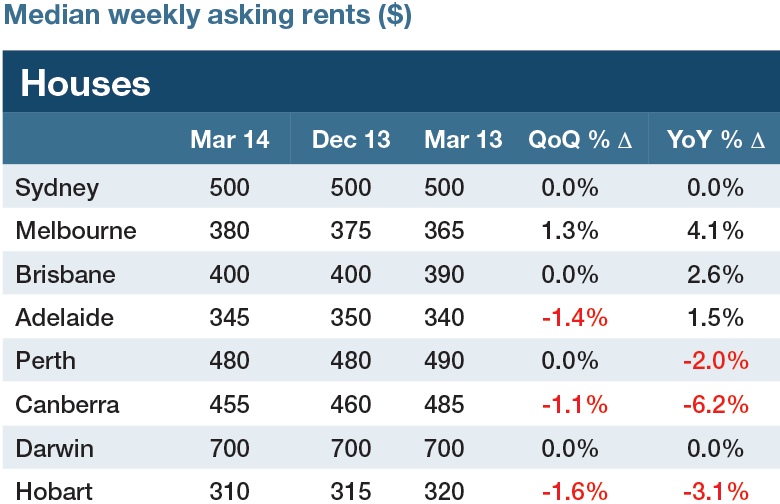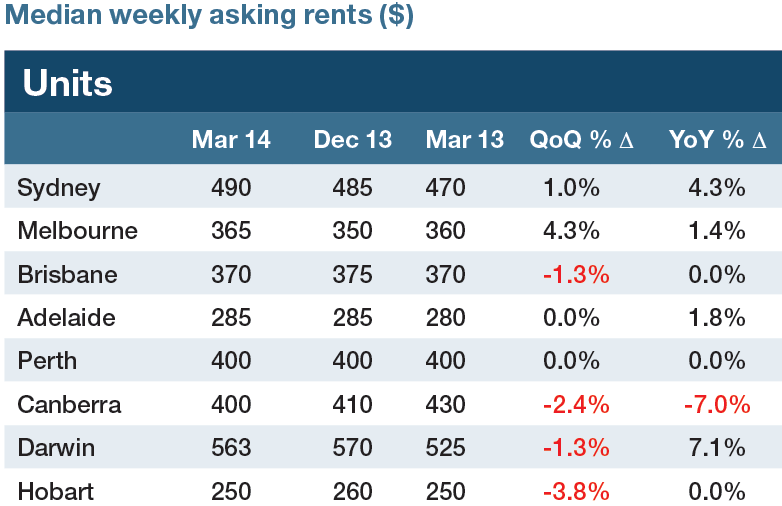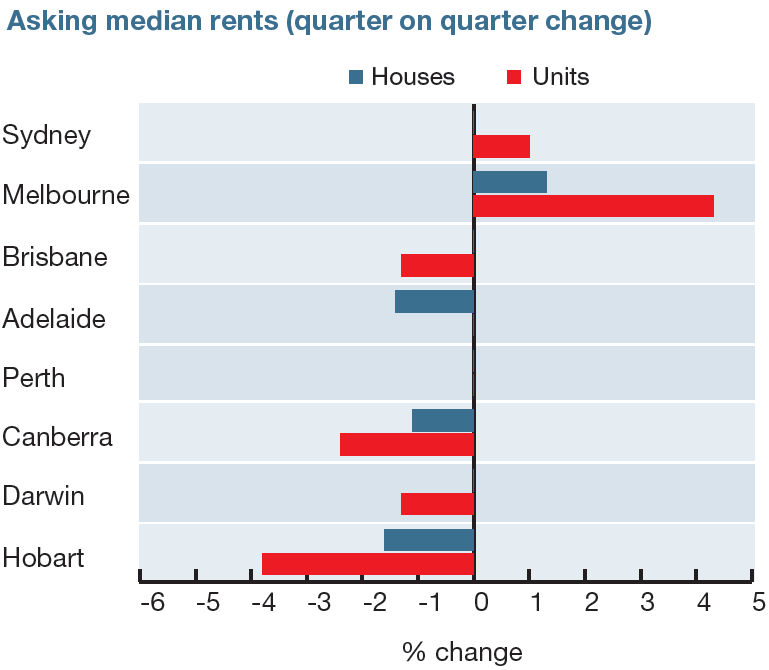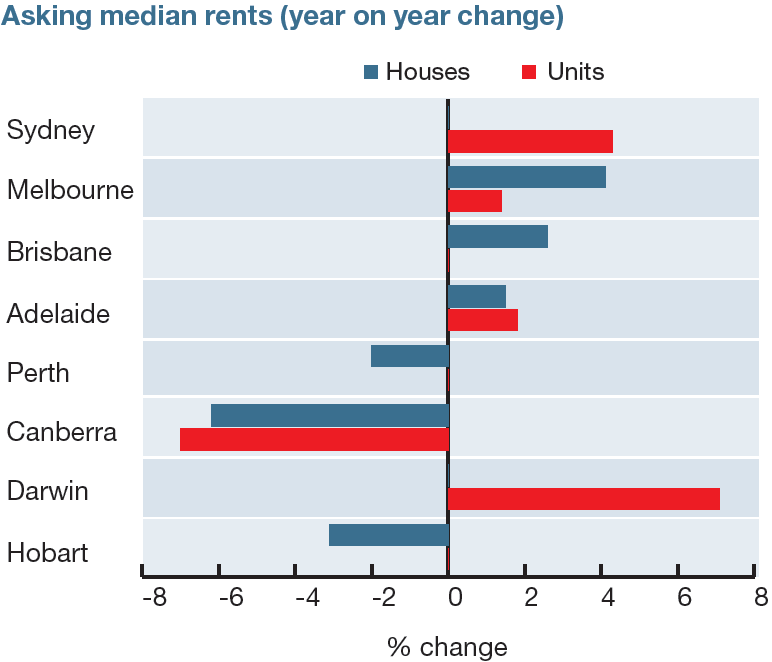Melbourne and Sydney show strength, as rest of the country’s rents dip

Across the March quarter, the national median weekly asking rent for houses increased by a subtle 0.2%, with unit rents increasing by 1.7%, however the picture is mixed across the country, explains Australian Property Monitors’ latest statistics.


Source: Australian Property Monitors
SYDNEY
National housing rents for the year ending March saw Sydney retain strength as the most expensive major capital for tenants, with median weekly asking house rent over the March quarter sitting at $500, and units at $490, explains APM’s senior economist, Andrew Wilson. As discussed yesterday, Sydney’s expensive rental market will come as no surprise to anyone looking to live there.
Despite this, Sydney’s house rents have remained flat for 12 months, “indicating underlying affordability barriers constraining rental growth,” said Wilson.
Sydney unit rents, however, continue to rise driven by the affordability advantages of units over houses and the growing preferences for apartment living and inner–city locations. Based on current trends, unit rents will be on parity with house rents sooner rather than later in 2014.”
Pointing to the recent rend of rising house rents, Melbourne has seen some of the best performance of all the capital cities – up 4.1% over the year, with the March quarter seeing a 1.3% increase.
“Melbourne unit rents have staged a revival after a lengthy period of subdued growth,” he said.
“Despite March quarter increases in rents, Melbourne remains relatively affordable for tenants with only Adelaide recording lower rents of all the mainland capitals.”
BRISBANE
However, the picture differs when looking at Brisbane, where the market was weaker over the March quarter, with house rents staying flat and unit rents actually dropping by 1.3%.
“Over the year ending March 2014, no growth was recorded in unit rents, however, house rents rose by +2.6%. Significant numbers of new inner city apartments continue to place downward pressure on rental growth,” said Wilson of the yearly statistics.
Note: Wilson explained that in Sydney, Melbourne and Brisbane, a low number of first home buyers could be responsible for creating some demand-based rental pressure, however increased supply with investor activity and new apartment building should impact rental growth in these cities.
Rental yields also have some interesting implications across Brisbane, Melbourne and Sydney. In the latter two capital cities, yields remain the lowest of all capitals for units and houses, however Melbourne appears to see some increases in yield suggesting weakness in price growth for inner city apartments. Brisbane, however, provides the highest gross rental yield of all the major capitals.
ADELAIDE
Currently, Adelaide is the most affordable of all mainland capitals, with subdued rental growth over the March quarter. In fact, over this period house rents fell by 1.4% and units remained flat.
PERTH
In Perth, the quarter recorded flat rents for house and units, as the “market continues to adjust after the unsustainably strong rental growth seen in the first half of 2013,” he said.
“House rents in Perth are now down by -2.0% over the year with no growth in unit rents,” said Wilson.
DARWIN
Despite flat rents for houses and unitsover the March quarter, a 7% increase over the year ending March was recorded.
HOBART, CANBERRA
Flat or falling rents for houses and units were recorded over the March quarter.


Source: Australian Property Monitors
Further mixed results for all capital cities are expected through 2014, as price growth moderates in most capitals, explained Wilson.
“Choppy capital city rental market performances over the March quarter reflects, to some degree, the uplift in home buying activity which was driven by sharp improvements in housing affordability over the past year,” he said.
“With prices growth likely to accelerate this year, expect increased house investor activity although yields may weaken.”